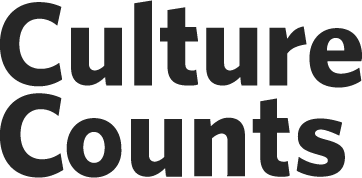Contents
Overview
Welcome to this 'always-on' report for the Culture Counts Data & Evaluation Culture Survey. This report also provides a demo tof he Culture Counts' Online Insights Report - an effective way to aggregate your outcomes and review your results across projects and portfolios. By adding narrative to your quantitative and qualitative data - you can tell a better story with your data.
This report shows the results from the Culture Counts Data & Evaluation Culture Survey. You can see a preview of the survey here.
The results in this report allow you to explore how your survey responses stack up against the responses of others.
Data Culture can be considered to be made up of four key factors, that this report will explore.
Data & Evaluation Culture
Data Collection
Data collection is an important activity to track and understand various working parts of an organisation. The charts below illustrate what respondents collect data and report on, and how they collect that data.
💡 What we tend to see is that while organisations are usually well equipped to collect data on attendance and visitor numbers, far fewer collect data around the actual experience of the attendees.
💡 While recording anecdotes and verbal feedback is the most common method of data collection around audience or visitor experience, almost all of our respondents say that they conduct some form of visitor research.
What Data is Collected
A survey can be informed by the sources of funding that can shape the scope and outcomes of the evaluation. The chart below highlights a comparison of the types of data that is collected and reported on based on the source of funding for different organisations.
💡 Most organisations collect data on attendance and visitor numbers, regardless of their funding sources. It is useful to understand whether funding sources influence the kinds of data collection that organistions undertake.
How Data is Collected
Distribution methods are important to consider when determining what data needs to be collected. Certain distribution methods may target specific respondent groups or provide increased general access to a survey, increasing the scope of the data collected. The chart below highlights a comparison of the types of data collection methods used by organisations, based on their source of funding.
💡 How funding sources influence research is useful information for organstions and their stakeholders. Where many organistions collect anecdotal feedback, organistions with government funding appear to be the least likely to collect this feedback.
Using Data
When collecting data, it is important to know the context of how the data will be used, this will inform how the survey should be distributed, as well as the design of the survey structure and questions.
💡 Internal reflection and assessment of events or programs are an ever important use for the data collected via an evaluation process.
Funding Sources
Funding provides organisations with the resources to boost revenue and make meaningful connections with stakeholders. There are various sources of funding available that suit an organisation's strategic objectives. The chart below illustrates how respondents received funding through different sources.
💡 Our respondents receive funding from a wide range of sources. However, a large portion receive some governmental support (across various levels of government).
Comfort/Skills
Our users come from a wide range of backgrounds and have different levels of experience with evaluation. The below chart shows some of the things that respondents to our Data Culture surveys said they are comfortable with.
💡 While some respondents feel comfortable knowing what questions to ask their audiences and interpreting the responses, a large proportion do not feel comfortable with any aspects of the evaluation process.
Talk to us
We would love to partner with you on your evaluation journey. Please complete the enquiry form and we will be in touch!
